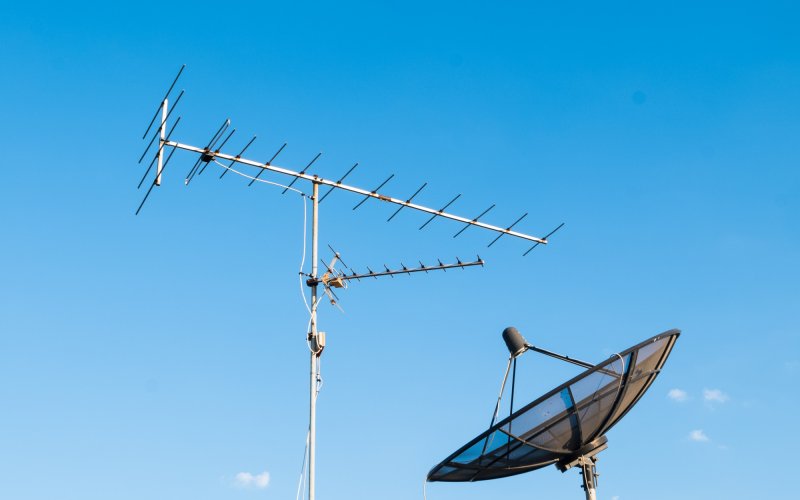If you want to easily find south (and therefore the other cardinal directions) in an urban area, just look at where the satellite dishes are pointing—in the northern hemisphere, they always point south.
Why is this the case? Satellite reception is provided (unsurprisingly) by satellites — transmitters that orbit the Earth. One satellite that we are all familiar with is the Moon. It also orbits the Earth. Its period (the time it takes to orbit the Earth) is 27 days, which means that in 27 days it will be in the same place above the Earth. To avoid having to constantly reorient satellite antennas, we need their orbital period to be 24 hours — that is, they orbit the Earth in the same time it takes the Earth to rotate on its axis. For us, the satellite will therefore always be above the same place on Earth, and if we point the antenna at it, we will not have to keep repositioning it. In order for the satellite to orbit the Earth and always be above the same place, it must be at a certain altitude, in a so-called geostationary orbit. If we want to find out what this altitude is, we can calculate it (the centrifugal force is equal to the gravitational force, and the orbital period is 24 hours), or we can find it out here — satellites in geostationary orbit, orbit around the equator at an altitude of 36,000 km. Because geostationary satellites orbit above the equator, which is south of us, satellite dishes must be pointed in that direction. In Australia, for example, satellite dishes point north.
If the information on the internet is correct, there are currently more than 500 satellites in geostationary orbit.
Want to ask something?
Send us an e-mail with the subject “Physics mysteries” to the address:
We can't wait to tackle your interesting questions!





